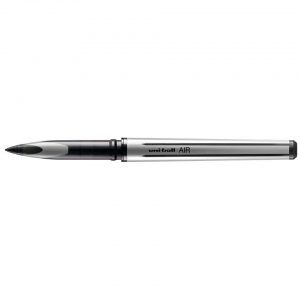Complete your POSCA art collection and master cool new art techniques with POSCA PENCILS and POSCA PASTELS.
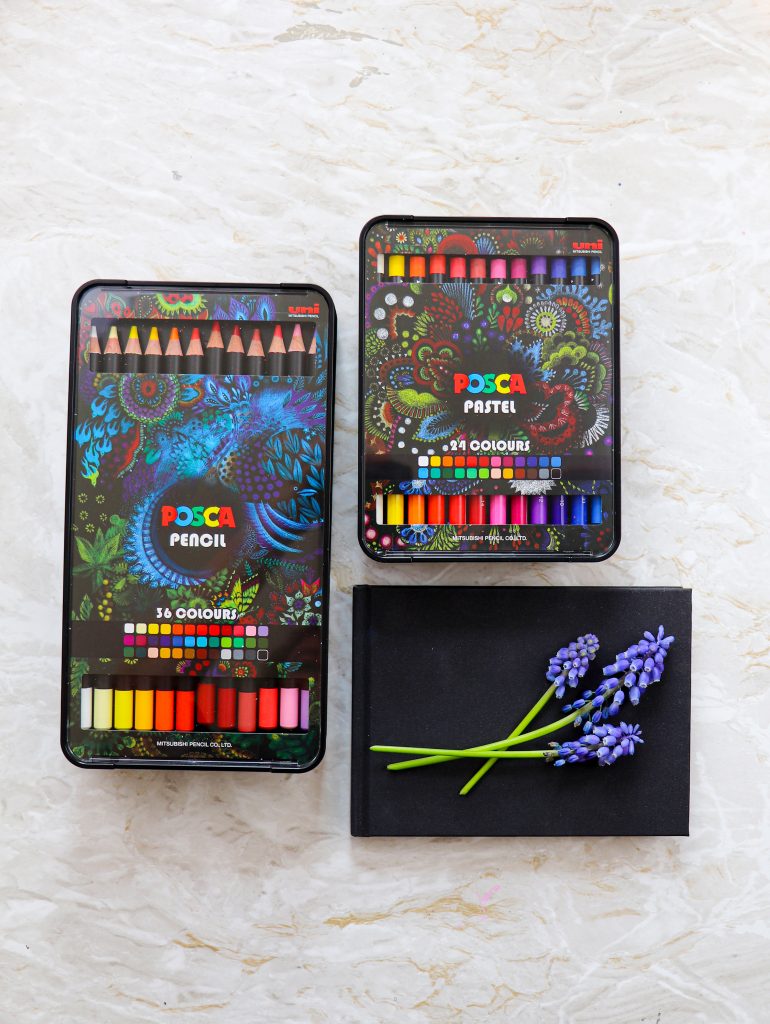
POSCA has its expanded its range to include POSCA PENCILS and PASTELS , giving you more creative options and the chance to master new skills and techniques
POSCA PENCILS have the same quality you’d expect from POSCA, boasting amazing longevity, usability and, naturally, fantastic colour range and coverage. POSCA PENCILS have a unique formula and contain more oil than wax, making the colours ultra deep, punchy and vidid. Their innovative construction means the pencils are sleek and easy to use, sharpen like a dream and don’t crumble or break when a heavy pressure is applied. These top quality art pencils have six levels of intensity and carry a deep, rich concentration. So embrace your colourful side and explore a wealth of possibilities with POSCA PENCILS.
POSCA PASTELs have been formulated with the artist in mind. Their unique formula contains more wax than oil, so colours are vibrant and true with a super smooth finish. This also means that POSCA PASTELs are remarkably clean to use, leaving hardly any residue on the page.
You can explore so many tried and tested art techniques with both POSCA PASTELS and POSCA PENCILS. Working with POSCA PASTELS is exciting because you can really celebrate colour and texture. Their vibrance and luminosity are just made for colourful and expressive work.
POSCA PASTEL techniques explored
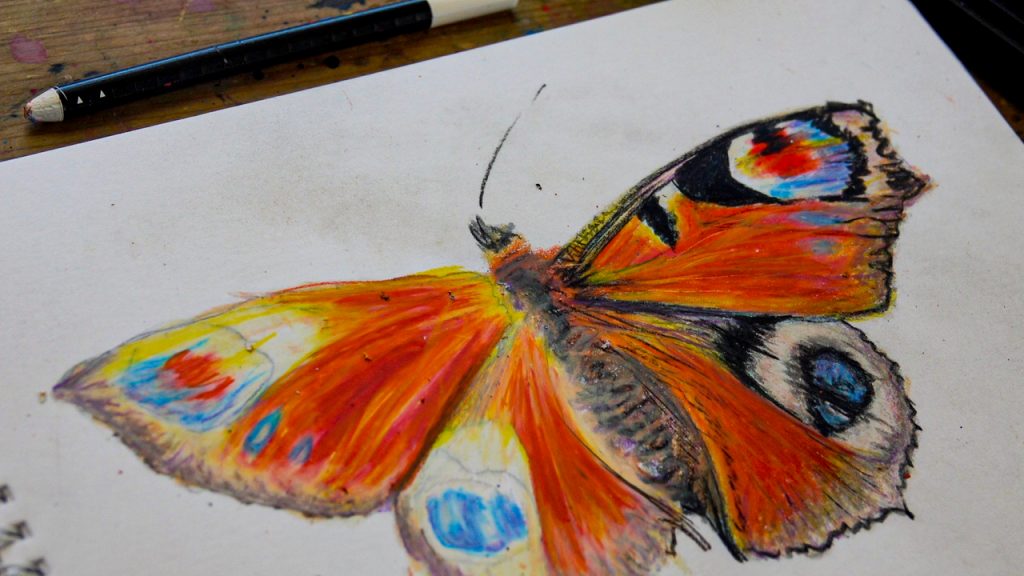
You can employ a wealth of drawing techniques to get the absolute best from your POSCA PASTEL colours. Explore these methods to achieve different looks and finishes for you to create some really impressive art.
You can use gradient shading to vary the intensity of your colour based on the amount of pressure you apply. Press hard for solid colour and work lighter for a softer look. Blend and soften to create smooth coverage by working your pastels over each other. Simply layer shades to make an even tone and bold, vibrant artwork, you can see this in progress in our butterfly illustration above. Cross hatching is another way to create tone; it’s a traditional linear technique where you make a series of criss-cross marks and stokes to create tone. More solid areas are created by layering the marks – the more layers you make the darker it gets. You can also vary the direction of the strokes to further emphasise the subject’s shape; think about wrapping your lines around the subject to give it greater form.
POSCA PASTELS have the ideal consistency for sgraffito and scraping effects. Apply layers of colour and use a stick, knife or pen nib to scrape away to add texture and detail. You can also melt your sticks. Hold them over a flame and while it is still hot, work it over your art-piece. This will create a raised effect on the surface and a sold coverage. You will have to work quickly on this as the stick cools fast.
In the image below we used cross-hatching, melting and sgraffito in this expressive piece on black card. You can see that layers of pastel has been layered then scraped away to achieve a rough texture. A white POSCA PASTEL was held over a flame and applied to the horse’s face to create highlights. Then we used the same melting technique on a brown POSCA PASTEL for the man to get a raised effect.
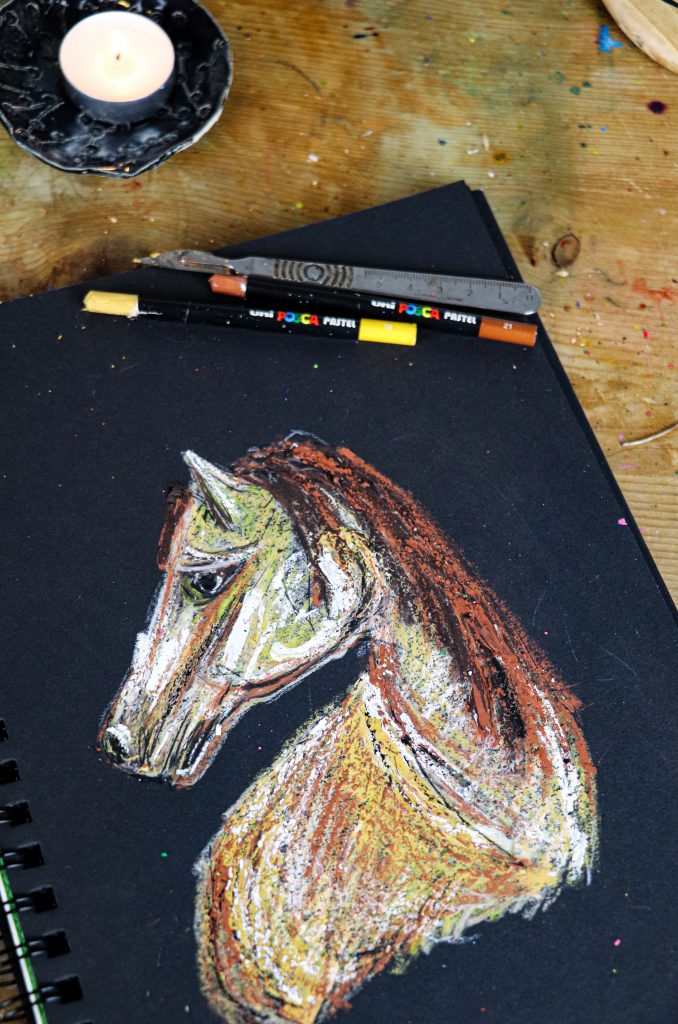
Check out our pastel techniques in action in this short video here…
Techniques to try with POSCA PENCILS
POSCA PENCILs give you the chance to explore an almost infinite array of drawing styles and artistic approaches. While POSCA PENCILs give you a fabulous, crisp, clean line you can also employ various blending methods to build areas of both solid and mixed colour. This will help you create remarkable artworks with plenty of depth, richness and intensity.
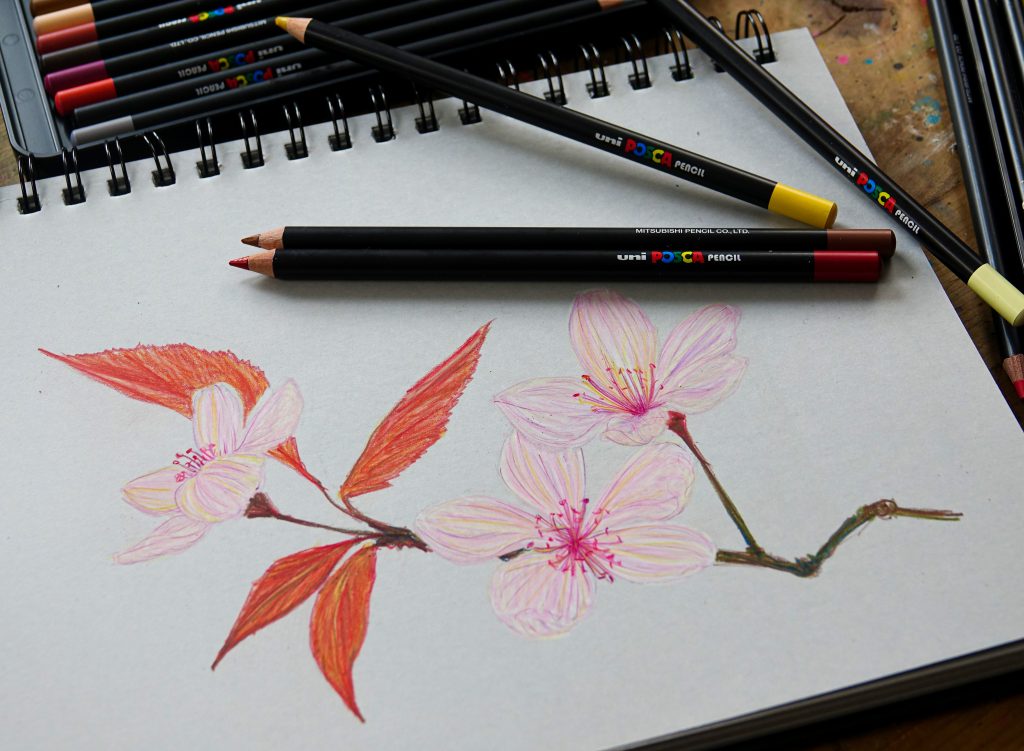
You can work with various shading techniques to build colour as you can see in the examples above and below. Work layers of your shade over and over for a more intense hue and simply use one to two layers of colour for a lighter tone. Blend further by working colours over each other to achieve beautiful, complex tonality. When using this method keep your pressure and strokes even and in the same direction. You can also cross-hatch with other colours to make more interesting shading. You can also see in these blossom and eye drawings how you can overlay pencil strokes over your blended colours for detail and definition. Remember to keep your POSCA PENCILS sharp; a precision point will help you get the detail and texture you require.
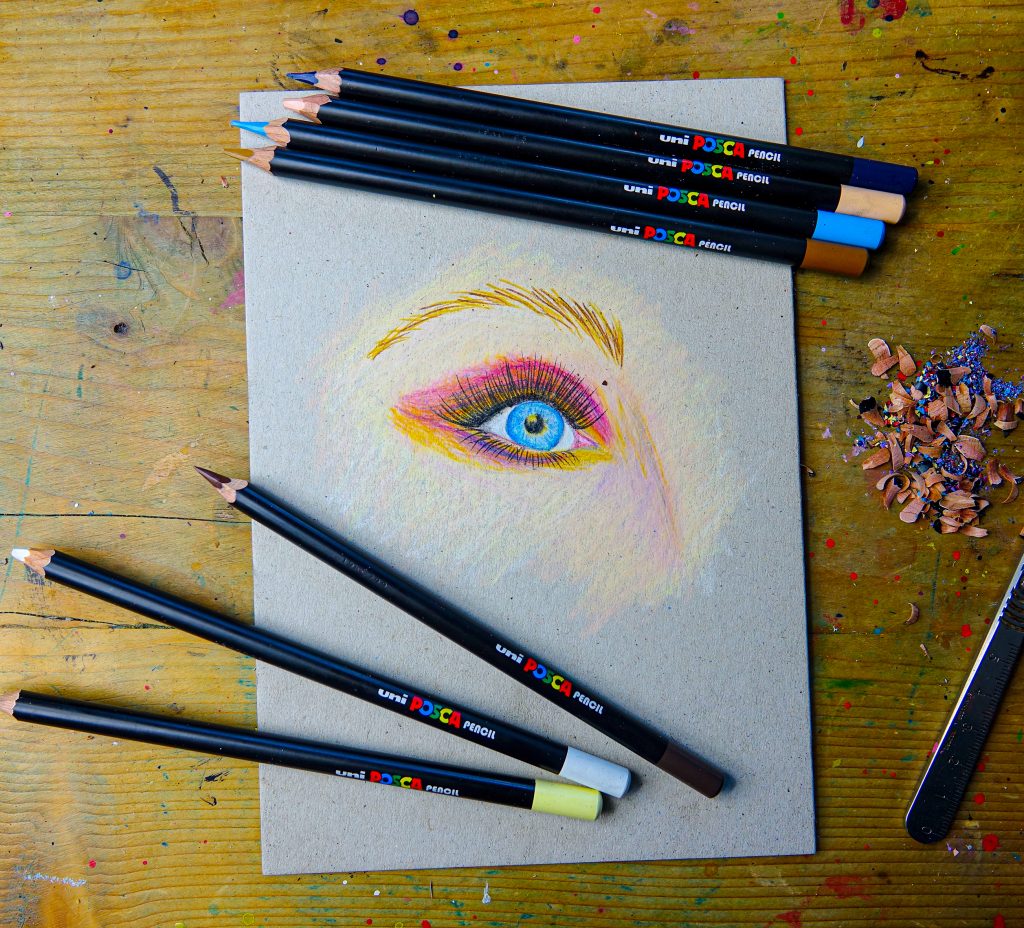
You may also wish to explore stippling and diluting your POSCA PENCIL colours. Stippling needs a little patience but it is a fun technique and can produce some lovely results with your POSCA PENCILS. Build up and group together dots to get deep tone and make smaller, lighter dots that are more spread out for lighter areas. You can alway combine different POSCA PENCIL shades to create more interest and depth of colour. To get a dreamy watery finish, sit your POSCA PENCILS in a jar of water for about 60 seconds. Then work away! For best results use primed cartridge or watercolour paper. And because POSCA PENCILS are oil based you can combine them with turpentine. This creates a beautiful, fluid colour blend. Working quickly, use a brush dipped in turpentine to drag your colours. We suggest using an oil pad rather than cartridge or watercolour paper to get the best out of this technique.
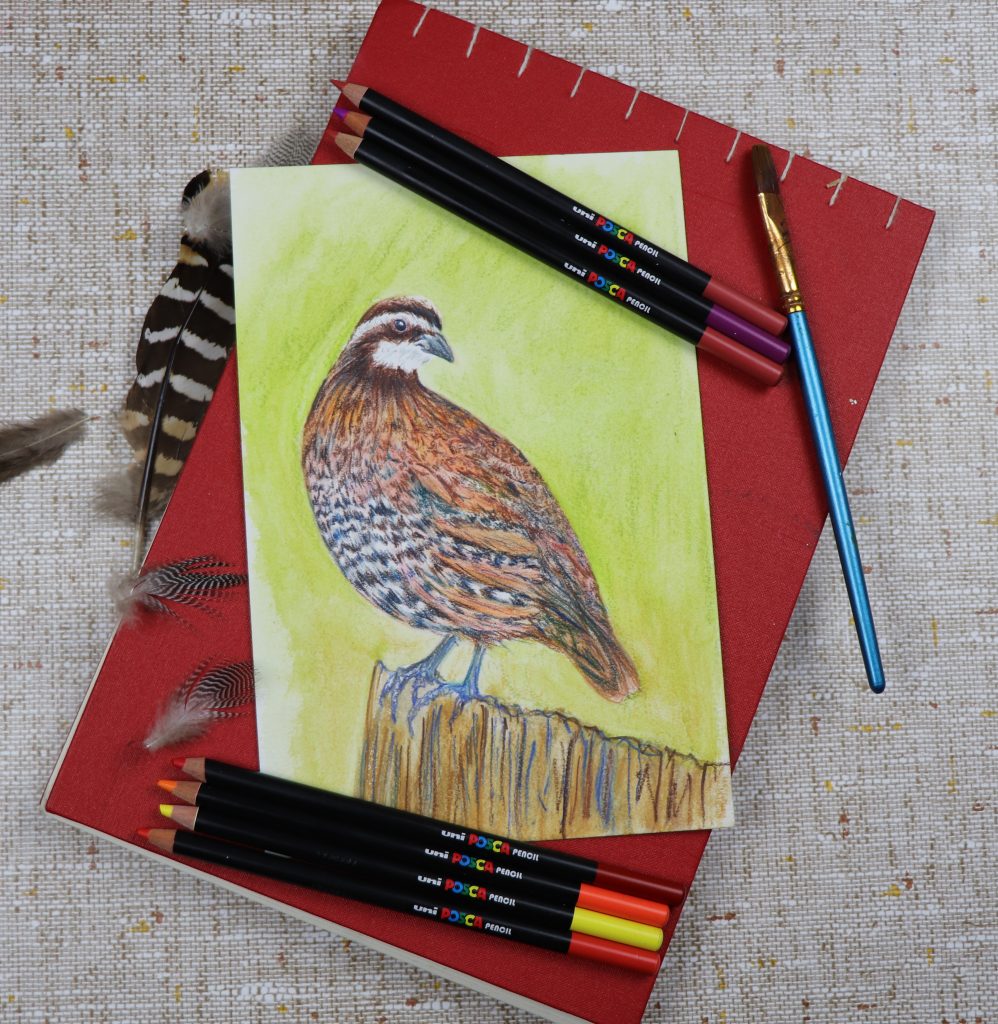
This quail drawing above employs cross-hatching, stippling, free-shading and working with turpentine. Basic shaping and colour was created by layering turpentine POSCA PENCIL colours over each other, then overlaying detail and depth over with dry pencil strokes. Background colour was achieved by spreading initial washes of POSCA PENCIL colour with turpentine. Both the plain and turpentine blended POSCA PENCIL effects look vibrant on this surface. Given the grain of the paper surface, an amazing amount of fine line and detail was retained.
You can also take a closer look at POSCA PENCIL techniques in this video below…

